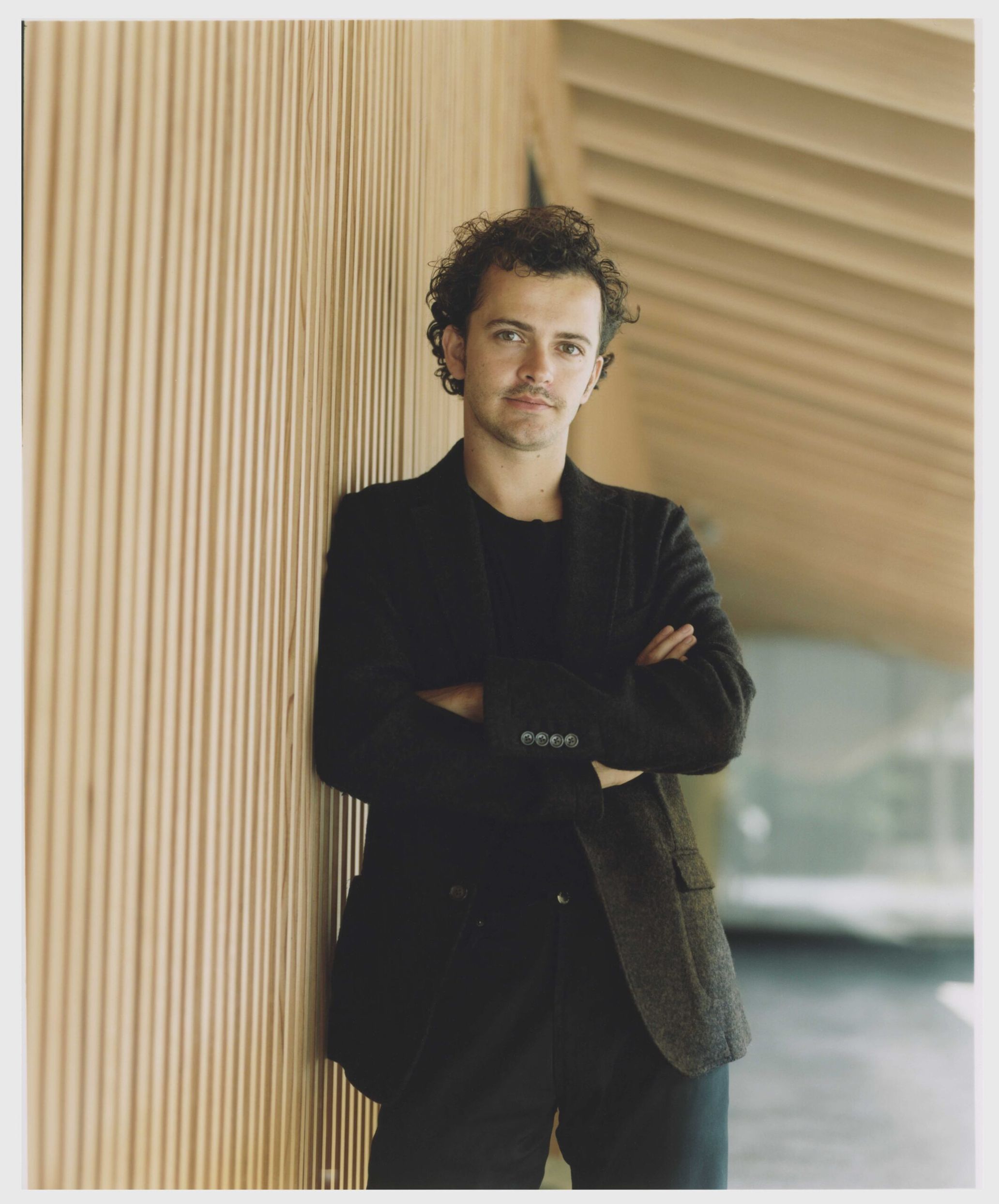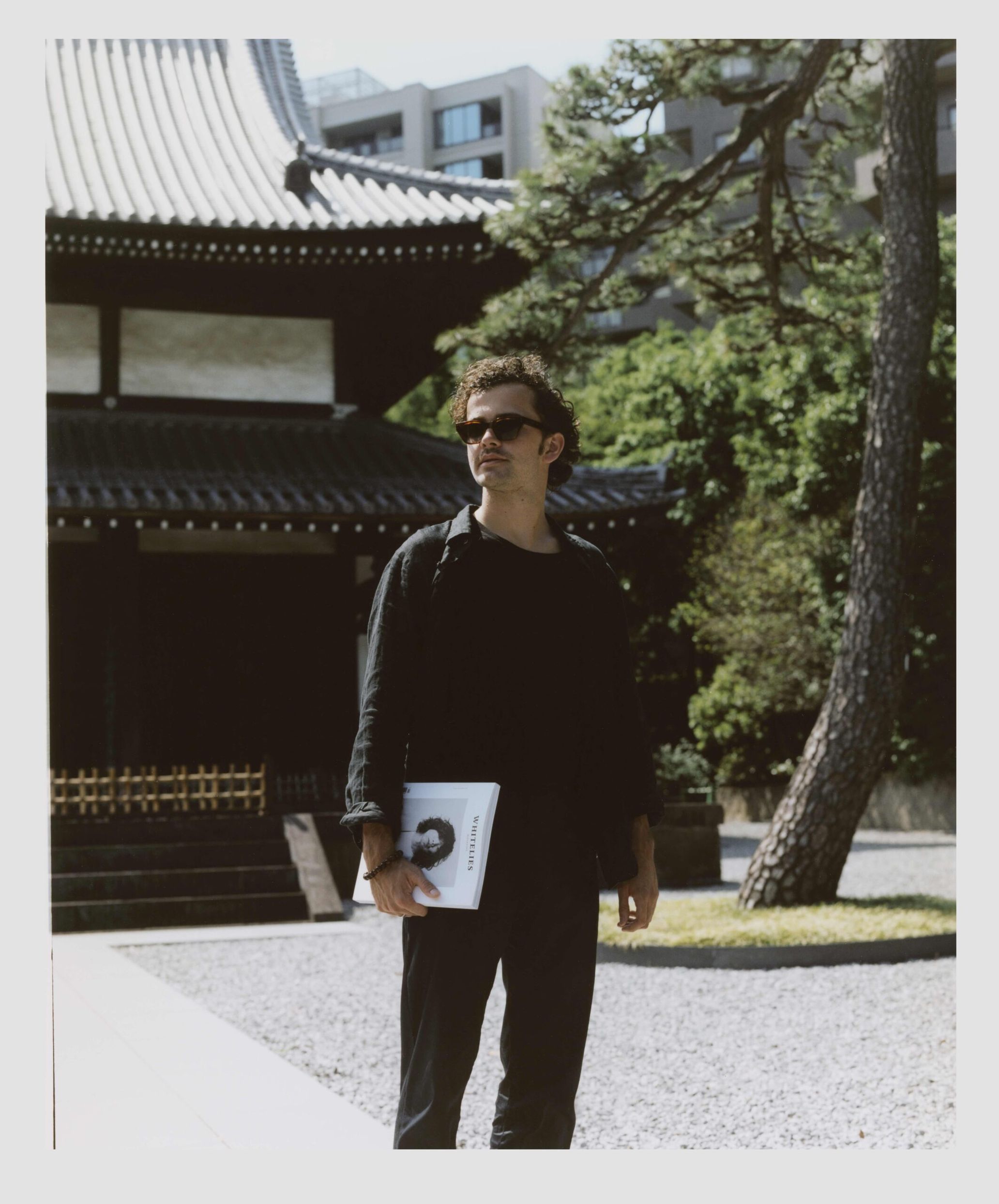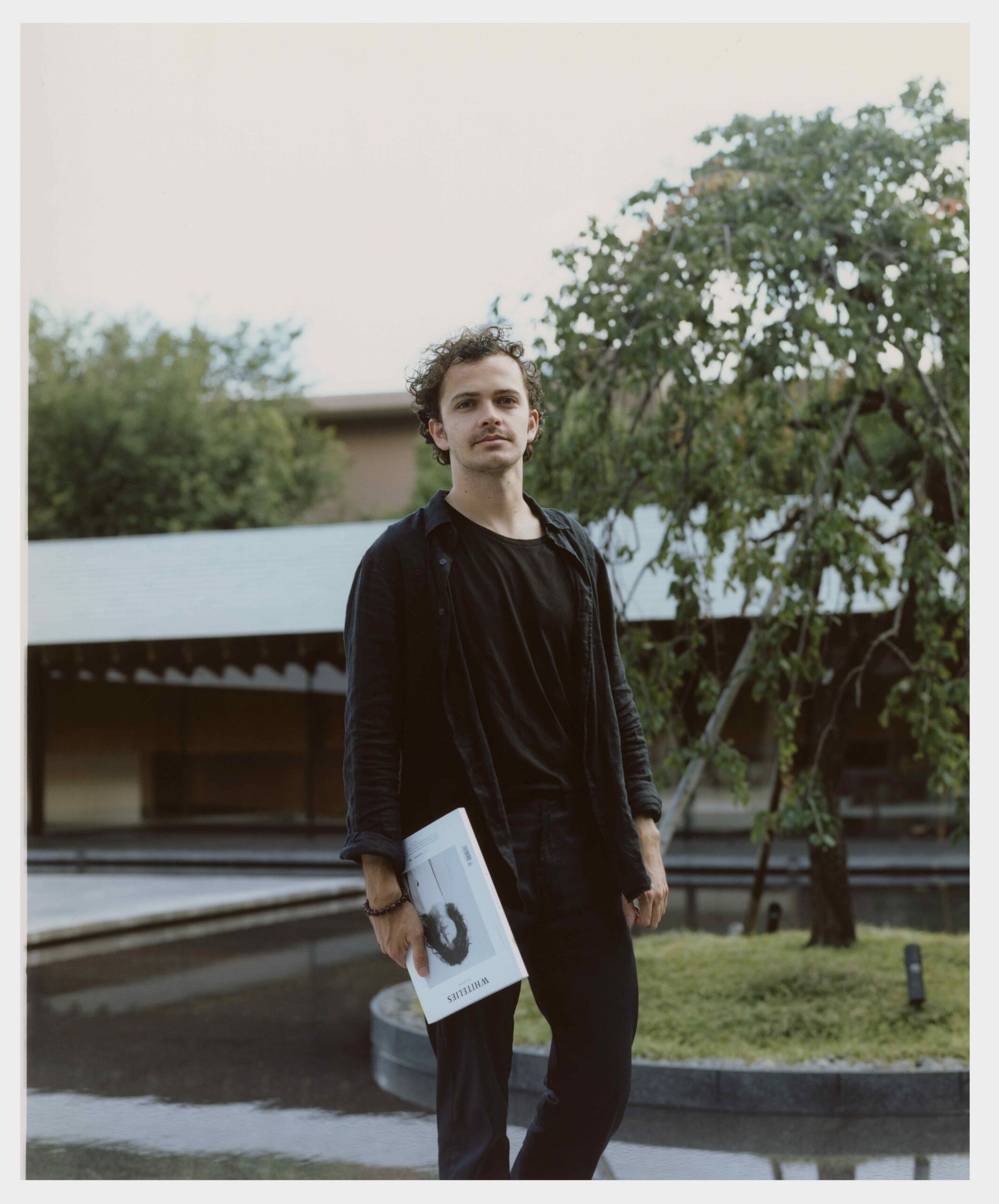Berlin-based Whitelies is a publisher that has published 10 print issues so far under the consistent concept of “cultural dialogue between East and West.” Each issue has a cross-cutting theme and features in-depth interviews with artists, designers, musicians, photographers, dancers, and others active in their fields, to explore their profound spirituality, along with photographs and other materials. The latest issue features Japanese musician Shintaro Sakamoto and Korean photographer Cho Gi-Seok on the cover.
Through exposing yourself to the energy generated from the conflict between contradictory elements, such as inner and outer world, past and future, nature and technology, East and West, you will surely sense something universal. What is the contemporary significance of defining Whitelies as a platform that supports people’s free creative practice and cultural development and of creating magazine and media outlet under the name of it? We spoke with Stefan Dotter, founder of Whitelies, now based in Tokyo.

Pursuing forms of expression as a “cultural connector”
–Please tell us about the evolution of Whitelies Magazine.
Stefan Dotter (Stefan): Whitelies Magazine can be described as a constantly growing and evolving platform. Our goal is to provide a space for well-established as well as aspiring artists and brands to express their unique worldviews and foster creative conversations. The publication is the result of their creativity, not a pre-determined expression. Through the magazine, the stories and works of the artists we collaborate with are gaining popularity and visibility in countries allover the world, leading to an every growing community.
Looking back to the roots, the magazine started as an online publication when I was 19 years old and an economics student in Vienna. At this time I was interested in disseminating information online and took my background knowledge of how blogs work into the opportunity of creating my own. At first, the content was solely focused on fashion but gradually shifted it’s focus to more profound cultural topics and interactions with other artists. The process of developing the magazine led us to a more focused approach of fostering a cultural dialogue between the West and the East, with a focus on Japan. Through unique collaborations with artists and designers based around those creative poles, we sought to create a new bridge.
–Is there any episode that led you to consider the dialogue between the West and the East? Also, what do you aim to achieve through the dialogue?
Stefan: The initial curiosity that led us down this path is based on my personal experience with eastern philosophy. I sympathized with Buddhist and Zen ideas early on, which led me to travel far east many times. Through my experiences in over 50 countries, I have gotten almost addicted to the organic effect of cultural dialogue. We indulge in such limited perspectives in our day to day life so I encourage anyone to seek out other perspectives and to find the cultural connectors that grant you access to genuine interactions that put your believes to a test. Whitelies Magazine is an extension of our efforts to connect people and give an uncompromised space for new thoughts and ideas.
Just recently had a longer discussion with the editorial board of Whitelies Magazine about what Identity means in our contemporary times. The team is very international and based between Berlin, Tokyo, London, New York and Copenhagen. It is these conversations where I see the strongest value of working on a publication like Whitelies. We share, we connect, we challenge. We invite eachother into our own worlds of expression and build community at its core. It is only a natural development that our upcoming 11th issue is dealing with the theme of “identity.”
–What is the reason for focusing on the East, especially Japan, in terms of a counterpart in the dialogue with the West?
Stefan: We felt strongly that especially in times of COVID-19 the dialogue has become very slow and old alienation reflexes have taken over. It is always beneficial to challenge your perspective through the eyes of a different culture. The focus on Japan came naturally as our team has strong personal connections to Japan. Specifically Tokyo is the most intriguing metropolis in the world in my opinion. While in the West we are getting accustomed to city life being quite generic and expected, Tokyo is a mysterious organic breeding ground for creativity.
— Now that you are based in Tokyo, what are some of the things you feel when you live here?
Stefan: I arrived in Tokyo in April of this year. I come from a past of constant travel, which is something that suffered greatly during COVID-19. Being here now has quieted down my lust for travel as the day to day life is so rich with discoveries and encounters – I have not experienced anything like it before. Just hopping on a train to go outside of Tokyo opens gates to entirely new worlds for me.
Naturally I am evaluating a lot of things based on my upbringing. One particularly thing I have been noticing is that back in Europe, it is common to spend a lot of energy and money to generate the best possible output, while sometimes neglecting the process. In Japan there is a lot of consideration given to the entire process which in turn makes the overall quality of everything very solid. You have the feeling that people are more involved in the philosophy of making things as good as they can be.
Another notable observation is that although you have a philosophy of collective identity – the personal individuality and originality that pops out everywhere is especially captivating. The seemingly dominant presence of modernity and rationality within architecture in Japan is always broken up by traditional architecture that cannot be reduced to modern functionality. The animistic belief in Shinto that “spirits dwell in all things” is really present to me. To me Japanese culture and traditions feel like a collection of all kind of intellectual and creative acts that have been accumulated over a long period of time.
And within this context, the constantly evolving subcultures of Tokyo – that artists and movements from all around the world are constantly inspired by – make for an integral part of the overall experience.

Exquisite creativity is timeless and universal
–With the development of information technology making it possible to communicate and create remotely to some extent, what is the importance of moving locations and physically interacting with each other?
Stefan: There are many aspects of the pandemic I could talk about and how they shifted the way we interact with eachother, however the most crucial one for me was mobility. Phyiscal connections had become quite difficult and collaborative projects have shapeshifted. It was a wonderful change for new things to evolve, but for those – me included – who really need the physical interaction for their creative process, it was rather a time of contemplation. Not everything is supposed to be online, not everything is supposed to be communicated quickly. Together with my publisher Oliver Schleith we explored many ways of communicating through new technologies – but we believe strongly in the importance of the physical process and only see online as an extension of our physical experience. I still write all my notes and my schedule in a book and that may never change.
On a personal level I can communicate and gather information online, but I don’t feel that it creates the same depth as a physical interaction. The same can be said about the relationship between online media and the users. It is important to understand and utilise advantages and characteristics within those spaces to transmit information, but how deeply can you really interact with your audience?
Whitelies Magazine has a huge emphasis on the importance of “timelessness” in our content and the way we work. Our publication transcends the normal cycles of a magazine and is collected and read five years later in the same way as upon release. Such a relationship is hardly possible based online.
–How do you decide on the theme for each issue and how do you go about the project?
Stefan: Initially we start conversations based on whatever we are interested in and through those conversations seek a common ground and theme that relates to our times, while remaining philosophically transcendent. The magazine is based on conversations – within the team and the artists we work with.
The themes follow eachother and relate to eachother strongly. As for the latest issue, “Patience” – which came after our 9th issue “Permanence” – we found a theme that we were all relating to a lot during the times of the pandemic when we just had to sit and wait. As the Editor in Chief I do not unilaterally decide the theme and the contents, but rather act in the role of a curator, focusing on the dialogue with our artists, writers and community. The magazine is based on a wonderful creative community from all around the world, with our Art Director Kevin Pfaff in Copenhagen, our Managing Editor Elaine Tam in London, our Publisher in Berlin and the Creative Direction here with me in Tokyo. We are aiming to challenge our own visions through the conversations we have. There are no specific restrictions, not for the team, nor the artists.
–What was the most impressive project in the latest issue?
Stefan: It is always difficult to choose as we are so passionately involved in all our contents. For me personally it was the continuation of our Ozu inspired story with Osamu Yokonami. Especially seeing how it was perceived in Japan. It marks the pinnacle of what collaboration can do at Whitelies Magazine. The fine balance of our Kevin Pfaff’s direction, paired with the styling work of Shotaro Yamaguchi. A representative piece for our work – contemporary and timeless at the same time.
–What is the theme of the next issue of the magazine?
Stefan: The theme of the next issue is “Identity”, and it will be published end of September. It marks the departure from our biannual schedule to only one issue per year. We found that a couple of months is just not enough time to deeply engage with a theme.
Now that we have our office in Tokyo we are very focused on expanding our community and reach through a new distribution network in east asia. We are shapeshifting and evolving into something larger. For the launch of the new issue we will be hosting an exhibition in Paris for a week to create an engageable space for our audience. A physical extension if you will.
–What is your vision for the future, and what do you hope to achieve through Whitelies Magazine?
Stefan: Magazines have a hard time nowadays as the landscape of funding changed drastically. Many publications have to adjust to the same publishing cycle and adjust to certain trends to keep the advertisers happy. We have been working very hard for ten years to create an uncompromised vision and it feels like only recently this approach has begun bearing the fruits we were hoping for. Our contemplation should rest on how we can reach the people we want to communicate with and how to implement a timeless system. You can still find back issues from five years ago in cafes and hotels around Germany. My friend called me the other day to tell me she is reading my magazine right now – it was issue No. 03. But the wheel has been spinning too fast and we all notice it. Brands are slowing down and introducing archival collections. Fashion weeks drastically use relevance.
We have seen a loss of identity in so many cases. There are only a few fashion houses that still have a significant identity – the rest became generic. Ever changing designers, quickly changing trends, a disregard for the DNA of the designers before them.
–Does the concept of archive resonate with “Timeless” in any way?
Stefan: Absolutely. To me the surface of existence and appearance changes constantly, but anything underlying that layer is timeless. If we only look at what is now, the world seems very unrooted and not easy to grasp. That goes for anything from world politics, environmental issues, culture etc.
In my opinion it is always a mistake to judge those events purely by what is going on right now, without any context. We always need to meditate on the flow of time, the historical background, analysis how this certain issue and similar issues have developed in the past. The same goes for creative creation. You cannot make out the philosophy and historical impact of a brand by just checking some images on instagram. The “Identity” of a fashion brand is something that emerges when the historical transition, the social background of each period, and the relationship with the culture of the respective times are all considered within the same framework.

Stefan Dotter
Born in Bamberg, southern Germany, Stefan is based in Berlin and Tokyo and works as an artist using photography and video expression. He has collaborated with fashion brands that takes an ethical approach, such as Hermes, Chanel, and Dior, and has been involved in Vogue, Numero, Purple and Monocle. In 2012, he launched the culture magazine Whitelies Magazine as editor-in-chief. He aims to create a platform for cultural dialogue between Europe and East Asia. https://stefandotter.com
Whitlites Magazine:https://www.whiteliesmagazine.com
Direction Hiroyoshi Tomite
Photography Jun Yasui
Edit Akio Kunisawa

